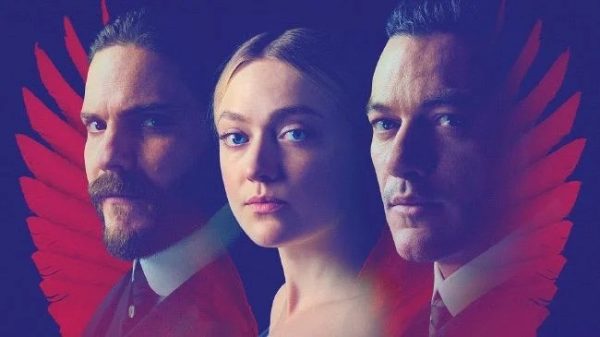
Doug Larmour is an award winning VFX veteran who has collaborated with numerous industry A-listers. Past projects include The Revenant, Guardians of the Galaxy and Mission Impossible: Fallout to name but a few. He has only ventured into television a handful of times in his career one of which was for The Alienist, which garnered him an Emmy. As season two concludes this Sunday, he took time out to talk to Martin Carr about his involvement and what brought him back for a second time.
Since you have been involved from the beginning, what was it creatively that brought you back for season two?
Ben Rosenblatt, who I had worked with on the first season, was beginning number two and I had so much fun first time round it made sense to do that again.
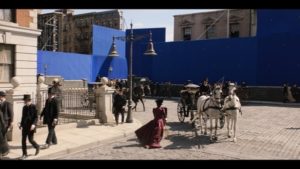
From the perspective of VFX how has The Alienist changed since those first meetings on that season one?
I think the style of VFX is very similar, in terms of it being all about extending those sets that they had and bringing scale to the piece. Whereas last season was very much about getting down and dirty by having our camera on street level, with an occasional high and wild shot, otherwise it was about being very close and intimate with these characters. However, this time everything was bigger and grander with more locations alongside sweeping camera moves. Where there were probably one or two wide shots of New York in the first series, for season two this was upped to maybe eight or ten. There were three in the first episode, two in the second and so they wanted to bring more of New York to life.
When Stuart Carolan (show runner) came on board how did that influence the direction of this show from your perspective?
Stuart and I came on board around the same time. I had seen scripts prior to that during the signing on process, but then there was a hiatus as that change took place. In terms of how it changed there hadn’t been a strict timeline across the whole series before then. This book is very hard and there are a number of plots all going off in different directions, so it was ultimately about creating suspense and having a unified storyline.
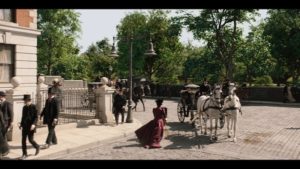
At its best should VFX underpin the drama or enhance the story?
Both. Underpinning the drama in terms of giving it life and more body but also VFX is just another tool you would use in the process to do anything. What VFX shouldn’t be is ‘oh look there’s a VFX’. I’m not saying I don’t want to see big beautiful things done well, but what I am saying is that you should just believe what you’re seeing. Whether we are talking about the magnitude or scale of something, or that you can believe someone is truly standing on the moon, or in this case that it is a real baby which has just been found. How much of this have you already seen?
Everything except the last two episodes which air this Sunday.
Ok. So from the perspective of this show and more specifically the last shot of that last episode, VFX is meant to do both of those things. It’s a shot of scale to reveal Broadway again coming out of Sara’s office, but is also supposed to represent a brand new start. So you see what we saw before but through new eyes, where her office is full of ladies working and she is in charge as the woman she should be. Our camera then pulls back to reveal the scale of New York just as it was but brighter, after which the clouds part and sunshine breaks through. That is not only supposed to make you feel invigorated but enhance the story and add breadth to this city.
Or in terms of episode one where you have Sara driving the carriage through New York. She is racing through the street and getting people to move aside, then all of a sudden you cut to this high and wide shot where Sara is tiny within the grand scale of New York. So in relation to the question you have had an emotional connection to that shot, which is to highlight her minimal impact within this sweeping cityscape, but also it enhances the story by illustrating scale and scope in terms of New York. Which in those two examples shows it is possible for VFX to do both as long as you don’t make it obvious.
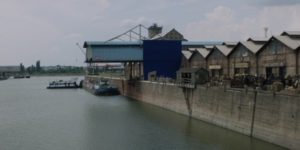
Considering you started with such a solid foundation from season one, what research went into expanding that universe this time for season two?
As I said we had a lot of research from season one which was mostly about the downtown area of The Bowery as well as Mulberry Street, where their main police station was situated. There were a few examples of uptown but from a VFX point of view you didn’t really see them. You also saw a few high and wide shots from The Statue of Liberty, so the building blocks of this city were there in terms of us having a plan of New York. There was The Brooklyn Bridge, The Statue of Liberty and a few boats and buildings which extended off into the distance for season one, which were our starting points. However, at the same time for this series we were in different places such as Hudson Street which were very similar to The Bowery, so we could use them a little bit more. We still had to do everything surrounding The Spanish Consulate as well as the Central Park asset, in terms of when you see the Consulate and trees behind it that was all extension with a huge blue screen on set. In episode four we fly right through Newspaper Row as well passing those new skyscrapers, which were there in season one but nowhere near as close. In season two you fly right by them and see every brick. Although the basic building blocks for the mid ground was there very little existed in the foreground apart from The Statue of Liberty. So we had to build Brooklyn Bridge again, all the skyscrapers and a large proportion of the docks including RMS Campania. It was all about creating a larger amount of detail than we had in the first series, in terms of more places to see and more scale.

As your career has lent more towards film more than television, what do you think are the main differences between them in terms of VFX?
There is literally no difference in terms of the scope or scale you aim towards. I think the major difference in episodic television is that sense of it being a team effort. On this we do have a supervising director in David Caffrey, our executive producer Ben Rosenblatt and Stuart Carolan our show runner making things look a certain way. However behind them is Rosalie Swedlin the main producer of this show and it was her baby, so there are a lot of different people making lots of different decisions. I would say there are more people having their say to ensure everything runs the way it should, but that gives you more latitude because there are more voices. I had probably more say over how things should look than might have been the case on a film project. Purely because on those occasions in that situation it tends to be more one on one. Of course there are other executives involved, but maybe that is more a reflection of how things have changed in terms of studio involvement overall.
As I said though you are still striving for the same results irrespective of medium. Maybe you have more shots, because certainly in the case of The Alienist there was almost eight hours of screen time to fill rather than ninety minutes. The intention throughout was that this never felt like a television show, but something much more cinematic in terms of polish, scale and grandeur which you would happily watch on the big screen. Especially considering how streaming services are taking over cinema in terms of audiences, this is now your premier place to watch something. I am not saying cinema is dead because I would hate that, but right now you want everything to feel as rich as possible because audiences still want that experience.
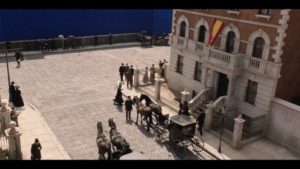
Creatively if you had to choose between all the money in the world and no money, or a bottomless budget and ticking clock. Which would you choose and why?
The ticking clock because with money you can build a great team. Time pressure always mentally focuses people and unfortunately having been on both sides of that, people lose focus if they have all the time in the world. Plus if you don’t have the resources to get something done it will never be as good as you want it to be. If you have those resources available it enables you to make decisions more quickly, especially when you require a quick turnaround and have ominous deadlines. Having said that you don’t want to ruin people because there is a fine line and art should never knowingly impact on your personal life. I have been in that situation too where people have worked three or four days to get something done, which is no good either. However as long as you are compassionate within that timeframe then I prefer the pressure.
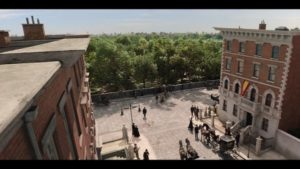
Considering the list of film makers you have worked with, what do you personally weigh up before signing on?
A lot of it depends on timing. If you have more than one project on the go with a family, there is always the question of whether this will see you in Australia for six months away from home. Also if you are weighing up two things alongside each other in terms of how they benefit you, both financially, personally and professionally you usually pick the most interesting. There are also those opportunities to work with someone who has a name and could be amazing, but if you have never worked with them you are not sure how that dynamic will work between you.
From a VFX point of view the choice to sign on tends to depend on what VFX you are able to show off, or whether you can make something look really good whatever that might be. Also it comes down to what extent you would be interested in this six months down the line, but of course everyone takes jobs to pay the rent and not everyone has that choice. Then there is the question of whether people want you to be part of that project as well, or whether the film is insignificant but financially worth it or if there is less money but more creative freedom. In which case I would choose the second option.
Describe for me your perfect Sunday afternoon.
It is definitely a sunny day, definitely involves my family and some nice food then probably a big walk.
Thank you for taking the time to talk to Flickering Myth and take care.
The Alienist concludes this Sunday on TNT.



